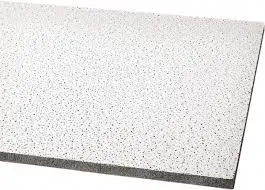Nov . 20, 2024 02:44 Back to list
grid ceiling material price
Exploring the Costs of Grid Ceiling Materials A Comprehensive Overview
When it comes to constructing or renovating a space, choosing the right ceiling material is crucial, as it can significantly influence both aesthetic appeal and functionality. One popular choice in modern architecture is the grid ceiling system, often chosen for its versatility, ease of installation, and cost efficiency. This article delves into the various materials used in grid ceilings and their associated prices, providing a comprehensive overview for homeowners, contractors, and architects.
Understanding Grid Ceilings
A grid ceiling, also known as a suspended or drop ceiling, consists of a framework (or grid) that supports tiles or panels. This system is particularly favored in commercial buildings, offices, and schools due to its seamless integration of lighting, HVAC, and other systems. Grid ceilings allow for easy access to wiring and ductwork, making maintenance more straightforward than traditional ceilings.
Common Materials for Grid Ceilings
1. Mineral Fiber Tiles Mineral fiber tiles are one of the most commonly used materials in grid ceilings. They are made from a combination of mineral fibers, binders, and additives, making them sound-absorbent and fire-resistant. The average price of mineral fiber tiles ranges from $0.50 to $2.00 per square foot. Their availability in various styles and finishes makes them popular for spaces needing acoustic control.
2. PVC (Polyvinyl Chloride) Panels PVC panels are a modern alternative that offers durability and moisture resistance. Ideal for environments prone to humidity, like bathrooms and kitchens, they’re also easy to clean. The cost for PVC panels typically ranges from $2.00 to $5.00 per square foot. While they may have a higher initial outlay compared to mineral fiber, their longevity and low maintenance can justify the investment.
3. Metal Tiles Metal ceiling tiles, often made from aluminum or steel, provide a sleek, modern aesthetic. They are available in various finishes, including brushed, polished, and painted options. The price for metal tiles can vary significantly, generally ranging from $3.00 to $15.00 per square foot, depending on the finish and design intricacies. These tiles are increasingly chosen for contemporary spaces, particularly in commercial sectors requiring a distinctive look.
grid ceiling material price

4. Gypsum Board For a more traditional look, gypsum board (often referred to as drywall) can be used in grid ceilings. While it provides a smooth finish and excellent fire resistance, it requires a more complex installation process compared to tile systems. Gypsum board typically costs around $1.00 to $3.00 per square foot, making it a budget-friendly option, especially in larger applications. However, installation labor is an added cost that should be considered.
5. Wood Panels Wood panels lend a warm, sophisticated appearance to grid ceilings, making them suitable for upscale residential and commercial projects. With prices ranging from $5.00 to $15.00 per square foot, wood can significantly elevate the aesthetic but also requires careful maintenance to preserve its appearance over time.
Cost Considerations
When evaluating the costs of grid ceiling materials, it’s essential to factor in additional expenses beyond the price per square foot. Installation costs can vary based on the complexity of the project and the chosen material. Professional installation can add anywhere from $1.00 to $3.00 per square foot to the overall project cost.
Moreover, local materials, shipping fees, and the specific requirements of your project can all affect the final price. It's advisable to gather multiple quotes from contractors and suppliers to ensure a competitive rate.
Conclusion
Choosing the right grid ceiling material is a balance between budget, aesthetics, and functionality. Understanding the costs associated with mineral fiber tiles, PVC panels, metal tiles, gypsum board, and wood panels will help stakeholders make informed decisions. As with any renovation or construction project, thorough planning and consideration of both immediate and long-term costs can lead to a satisfying outcome, ensuring that the ceiling is not only an architectural feature but also a key component of the overall environment.
-
Durable Ceiling T Grid Systems | Easy InstallationNewsAug.29,2025
-
PVC Gypsum Ceiling: Durable, Laminated Tiles for Modern SpacesNewsAug.28,2025
-
Pvc Gypsum Ceiling Is DurableNewsAug.21,2025
-
Mineral Fiber Board Is DurableNewsAug.21,2025
-
Ceiling Tile Clip Reusable DesignNewsAug.21,2025
-
Ceiling T Grid Modular DesignNewsAug.21,2025







